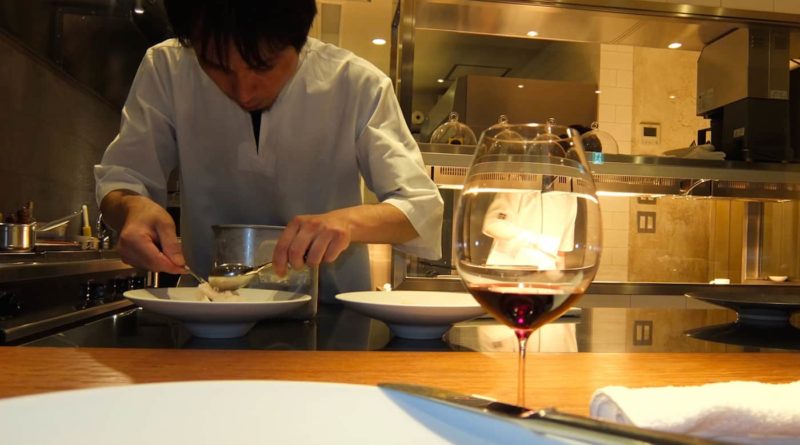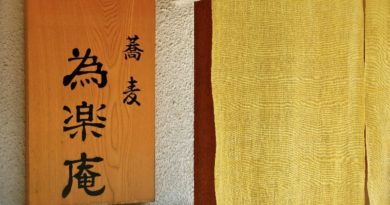Hiroto
Did you ever wish you had a private chef? A really good one? I have and it can be life changing. Sadly downscaled, I don’t have one in Japan; however in Hiroshima we all have the next best thing, Chef Yoshiyuki Hiroto.
Chef is able to take a suggestion and make it into a culinary reality that is both different than what you expected, yet doesn’t make you scare you before or after that first bite. Michelin lists Hiroto as a French restaurant, which is not exactly the case, as Hiroto is also very much Japanese at its core. And that core is very much the Birkenstock clad chef.
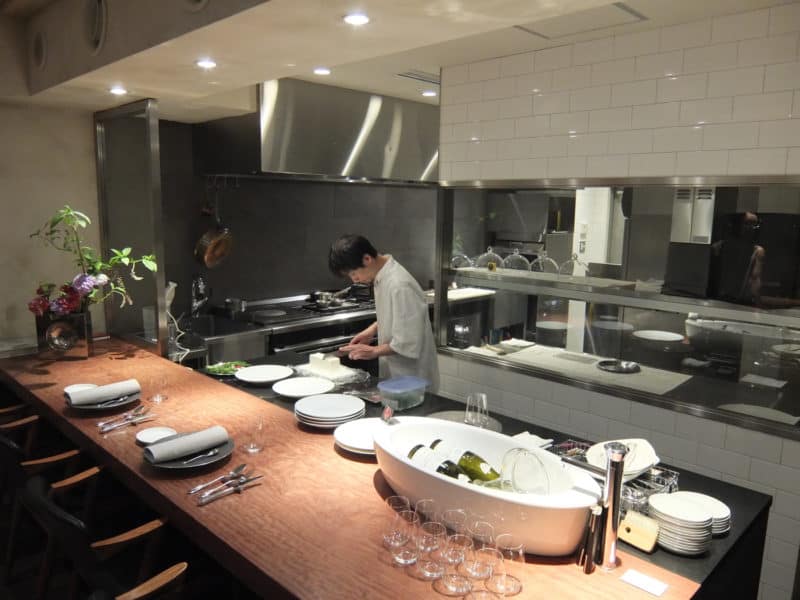
The first time at Hiroto two years ago, after one of the best meals I’ve had in Japan, Chef joined us at the counter and made a confession. The meal had a few components that he would not have included for most of his guests, notably a brilliantly executed pressed squab, that paired wonderfully with a spicy Cabernet Franc. Chef divulged that he had overheard me speaking English in the background as my wife had made the reservation, and combined with our atypical wine request, he decided that we might have more adventuresome tastes than many Japanese. With this in mind, he ventured to use a few of his more daring recipes. As a good personal chef would do, he will discuss any aspect of the meal that you’d like, as well as a host of other food related topics. Over the course of seven visits, Chef has introduced us to where to find the best cheeses in the area, his favorite Tokyo restaurants, how his visits to Paris have become slightly disappointing, and his new favorite food trends – he highly recommends new Danish cuisine. We’ve also seen him playing with ideas that he’s yet to offer to patrons – a recent foie gras and sake experiment looked promising. Occasionally I’ve had to fight the urge to suggest booking dinner for the following evening, having watched him prepare both granita and ice cream by hand for the next day’s guests, as he offers advice on what to do with two cans of foie gras I’d been recently gifted with when someone returned from France, he recommends serving it on the dark bread offered at Andersen, by the way.
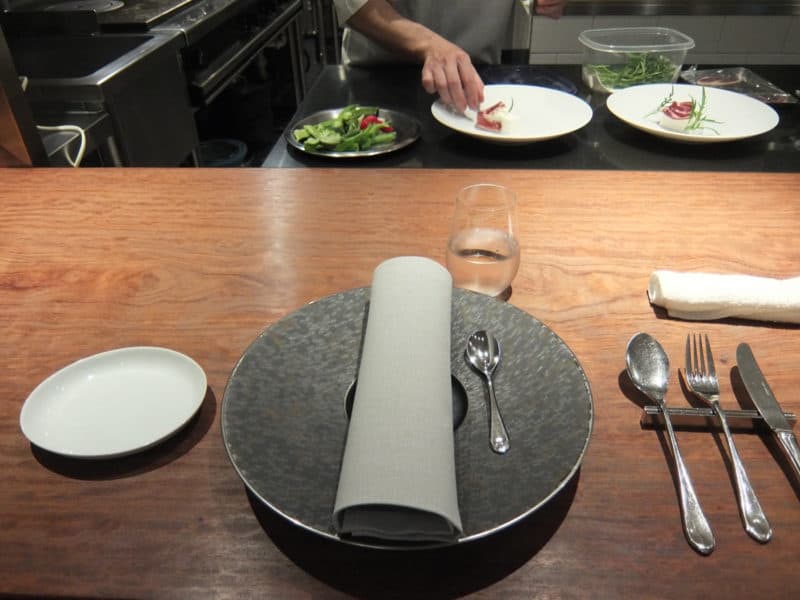
If it sounds as if we were given access to the inner workings of the kitchen, we were, as will you be if you so choose. One of the most Japanese components of Hiroto is that the kitchen is completely open, much in the way a sushi counter or teppan restaurant allows you to see exactly what the the chef is doing, creating a sort of intimacy that is frequently missing from the more pretentious high end restaurants in Japan. There are four seats at a beautiful counter made of a single heavy piece of hardwood, but Chef can’t really recall what sort of wood it is exactly, but remembers that it’s heavy. These choice seats put you with a view of pretty much every part of the well organized and clean kitchen, allowing you to watch Chef and his ever present assistant move skillfully around the kitchen, and allowing them to be aware of exactly when you are finished with a course, need more bread, or a refill.

There is also a dining area with tables for another twelve guests at modern wooden chairs around smaller private tables or one larger central table. Still, it’s the kitchen, which is roughly the same size as the dining area, that will draw your attention. Watching the two team members work separately for several minutes, one preparing sauces and checking the progress of later courses, as the other is deftly arranging vegetables on oversized white plates, and refilling someone’s wine; and then wordlessly arriving together at the preparation counter, in sync, one ladling an earthy truffle sauce over the vegetables as the other makes the arugula and asparagus stand just so. Some kitchens are noisy, cluttered, and chaotic places, that may be perfect for studying dominance hierarchy. This one has simple clean lines, is well organized, and calm, and with just two people handling every aspect, there is no question who is calmly guiding the entire process. So there is a feeling of tranquility and quiet throughout the entire restaurant, without need for music or walls to hide the activities of the kitchen.

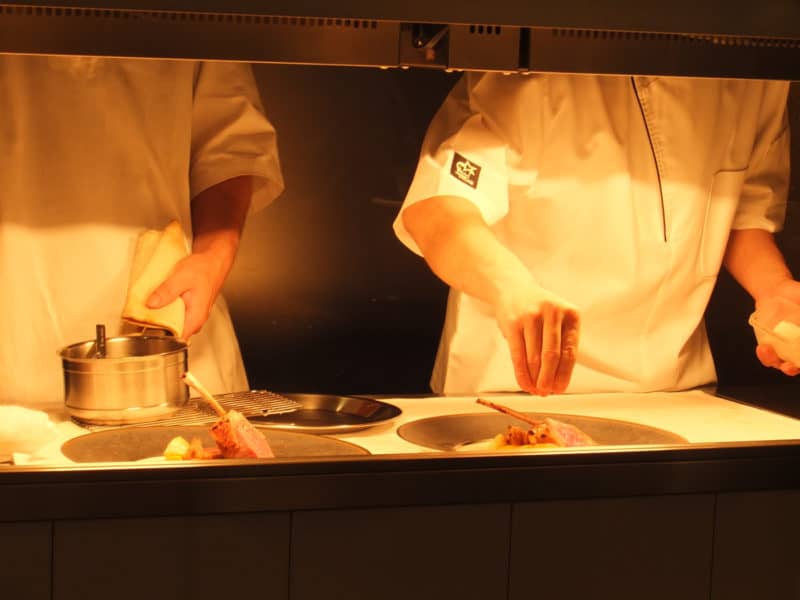
The cozy dark dining area, only the kitchen is undimmed, is seductive without being flowery and sweet, it is a straightforward and masculine sort of romance. And the staff knows when to step back and let you be, whether to enjoy your meal or the company of your partner or friends. As always though, with no more than a look, the restrained staff will immediately re-engage with you, the balance is welcoming yet no one is trying to be your new friend.
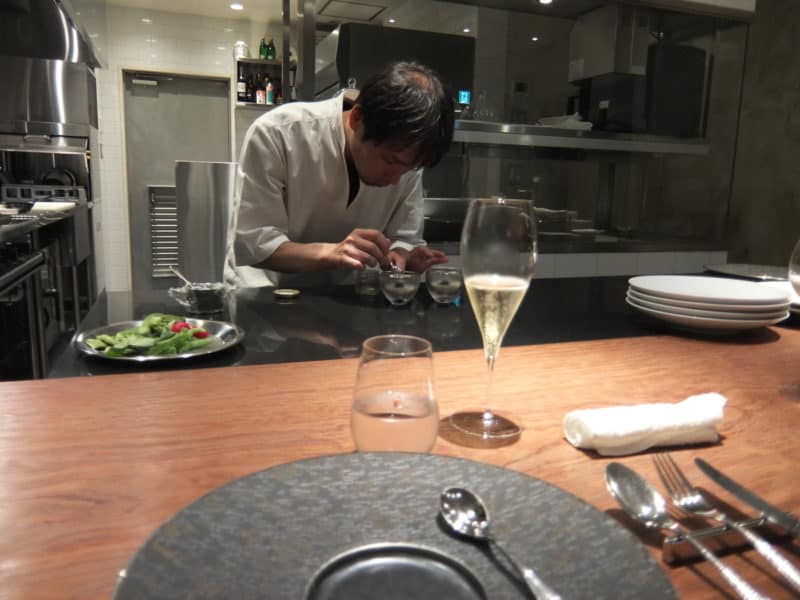
There is no menu, you choose a course level, by price, in advance, and Chef will design your meal. We tend to opt for either of the two upper level courses, and have never been disappointed. Usually at those levels there are between seven and nine courses including dessert. The menu varies by season, although much of it also changes daily depending on the availability of ingredients. There is a constant balancing of French and Japanese influences, such as a recent second course of hamo (pike conger) paired with chilled fresh Japanese peach seasoned with a delicate sauce made from the fruit and fish, followed by a third course featuring lobster tails and fava beans, covered with a luxurious sauce made from the lobster roe and tomalley, which was then followed alternating fish, vegetable, and meat dishes.
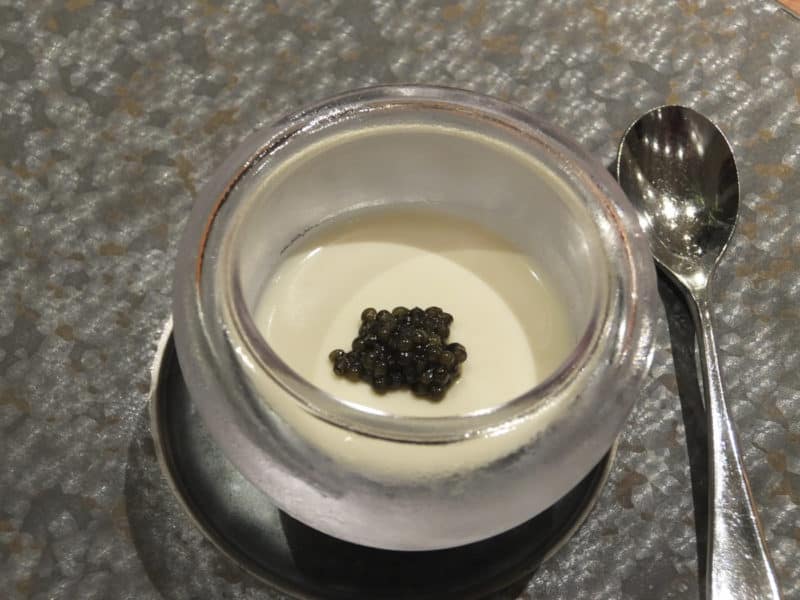
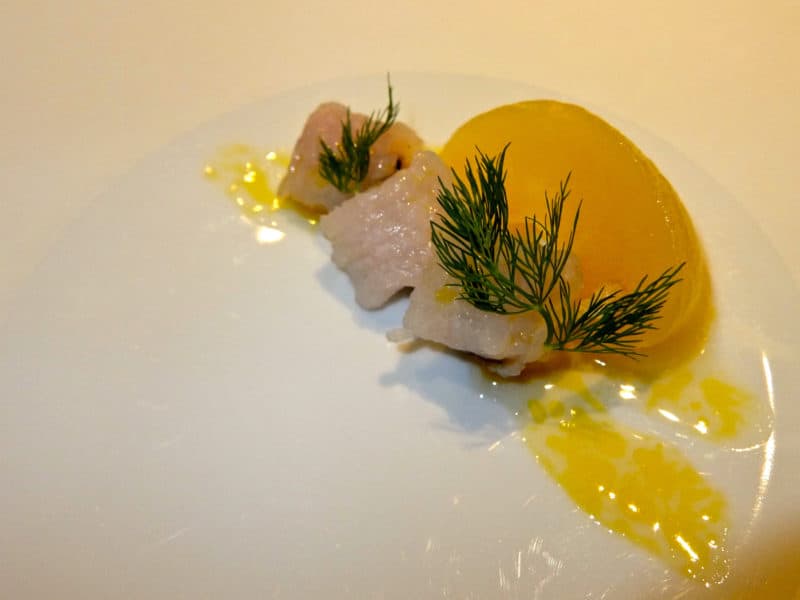
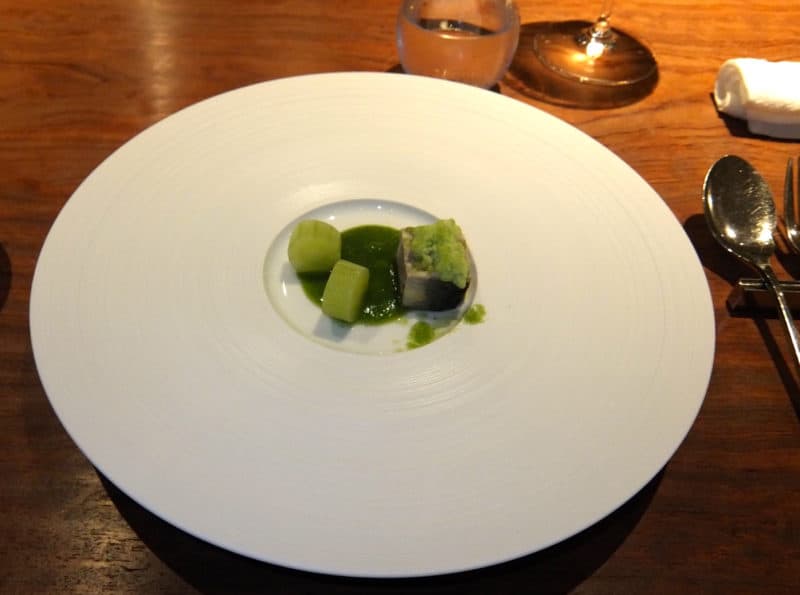
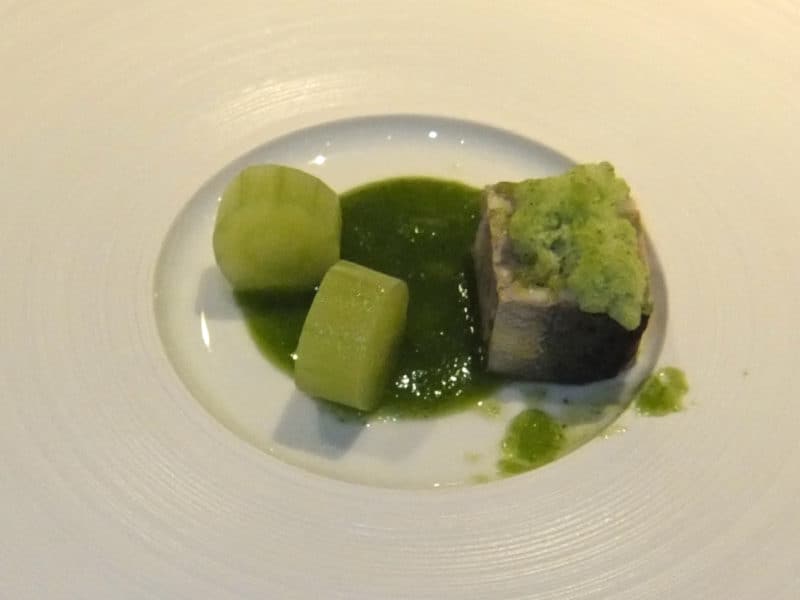
Regarding the meat dishes, Hiroto excels here with items that are both uncommon and magnificently flavorful, so having an audacious palate is well rewarded; our meals have included inoshishi (locally sourced wild boar) roast, the aforementioned squab, and a sensational agneau de pré-salé (salt marsh lamb), while other patrons were dining on lovely looking, but less intriguing, beef tournedos (tenderloin).
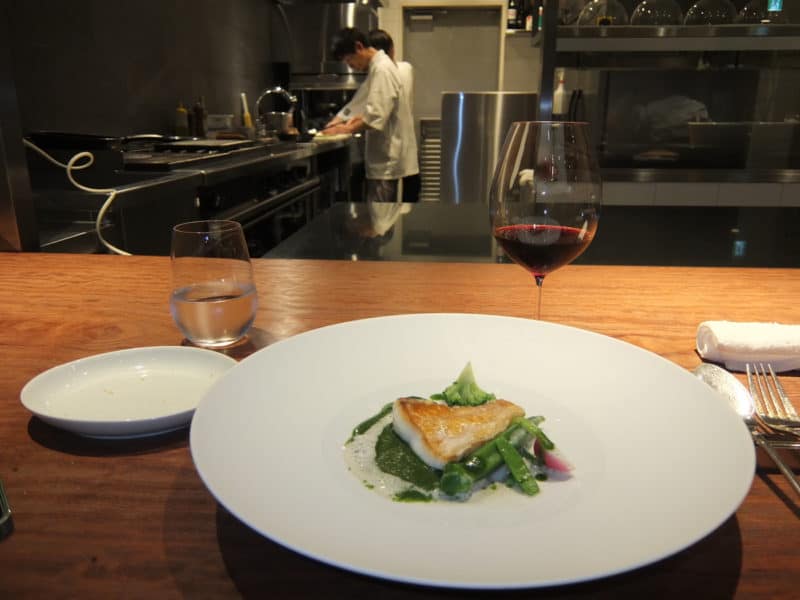

The wine cellar is by no means extensive, but it has the right wines, and at a variety of price points, although I frequently ask to have my courses paired with various recommended glass wines, allowing for more flexibility – four different glasses of wine paired throughout the nine courses generally runs much less than one bottle of good wine. Chef is also very helpful when choosing a wine to pair with the day’s menu, also noting your personal preferences for future visits.
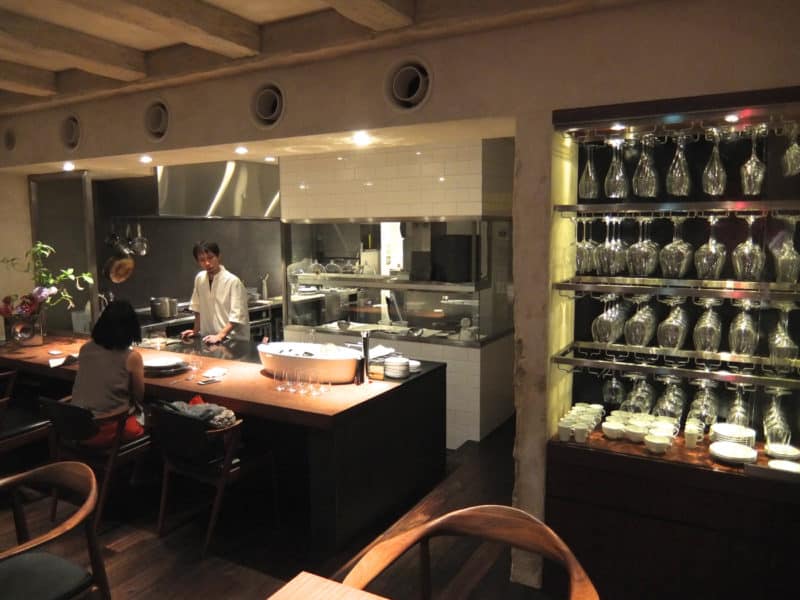
Chef Hiroto does not speak English, but you should not encounter too much difficulty making a reservation even if you have only basic Japanese, as the quality service will be evident even over the telephone, or you can enlist the help of a Japanese speaking friend. You can also discuss any special accommodations, likes, dislikes, allergies, dietary concerns, or the occasion for the dinner when you at this time, and Chef will do his best to prepare for you. This makes it even possible to make special requests, such as no red meat, or specific fish that you’d like, or even a chocolate flavored dessert if you desire. For this reason, reservations are a must, generally a day or more in advance to give Mr. Hiroto a chance to source the ingredients necessary, although it is also sometimes possible to secure a table the same day, and allow them decide for you. Of course extraordinary requests might incur an even higher charge, but you will be told at the time of the reservation. When you are at the restaurant, other than choosing a wine, and your after dinner beverage, you will not need to actually converse, although you might miss some of the finer points when the various courses are described to you.
Someday perhaps again I’ll have daily nuisance of discussing what the evening’s dinner should be with another personal chef, but until then Hiroto is the perfect substitute.
Atmosphere
Uncluttered and spare. An open counter facing an open kitchen. Several intimate tables surrounding a larger one. Perfect for a romantic meal. No evidence that children have ever been inside. Staff are polite and completely free of attitude. Ultra modern restroom with high end amenities. No smoking.
Sound
Hushed without being stifling. No piped in music, the focus is on conversation and the food. The kitchen is surprisingly quiet. A loud drinking party would be very out of place here. I enjoy eavesdropping on others and practicing my Japanese listening skills here.
Recommended dishes
If you have have a sense of adventure, by all means let Chef know in advance, and he will accommodate. If you are a bit more conservative in your tastes or are particularly squeamish about certain items, also let them know. The menu is decided on daily, so I cannot recommend a particular dish. The desserts are certainly not an afterthought, save room.
Drinks and Wine
Good selection of French wines, at fair prices. Some after dinner cognacs and liqueurs. No cocktails in evidence, but there’s a bottle of Pernod that always catches my eye in the back of the kitchen. Sparkling water and other limited beverages for drivers and nondrinkers.
Price
The courses range from ¥5500, ¥8000, ¥10,500, to ¥13,000, and include coffee and dessert.
Open
Dinner from 18:00 until 24:00. Closed Mondays.
Accessibility
Street level, no major obstacles or stairs, slight step down in restroom.
Hiroto ヒロト
4-17 Fujimicho Naka-ku Hiroshima Hiroshima
広島県 広島市中区 富士見町 4-17
(Jizo-dori just off of Peace Bouleveard)
082-247-9889


